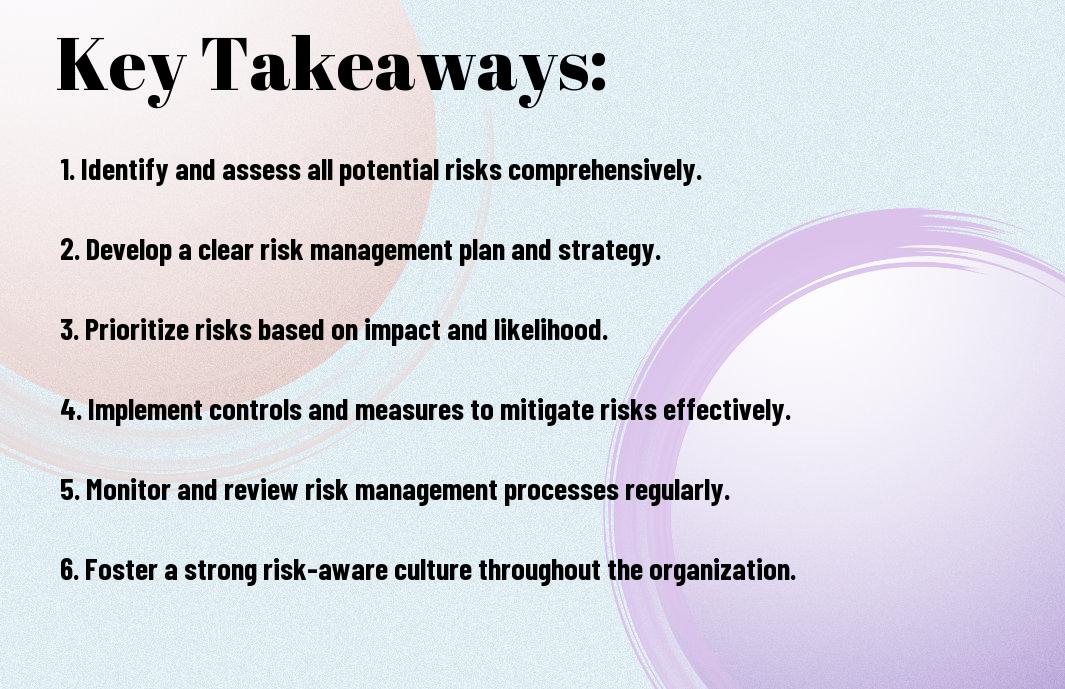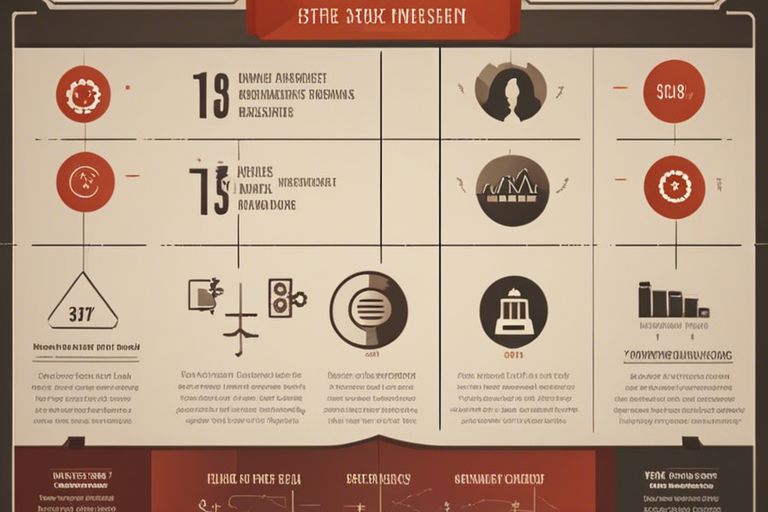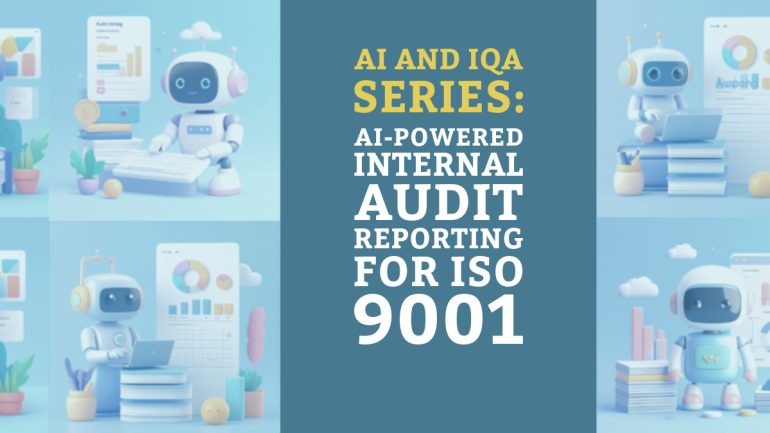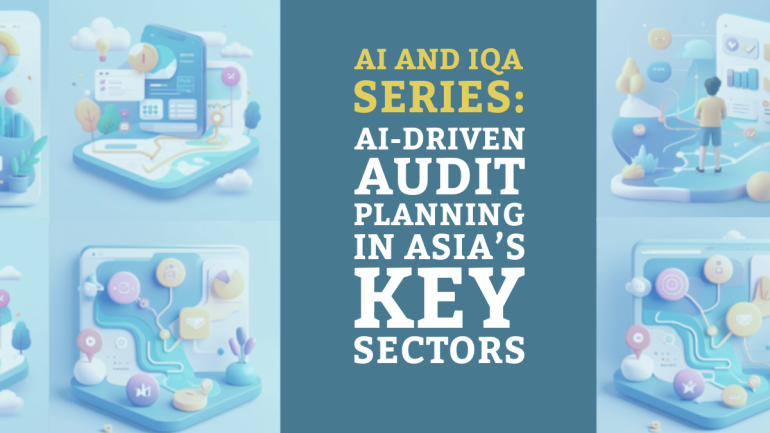Table of Contents
TL;DR: Effective Risk Management
- Risk Assessment: Conduct a thorough assessment of potential risks to your business, including internal and external factors.
- Proactive Approach: Implement proactive risk management strategies to identify, assess, and mitigate risks before they escalate.
- Risk Mitigation: Develop a detailed plan to minimize the impact of potential risks on your business operations and financial stability.
- Regular Review: Regularly review and update your risk management strategies to adapt to changing business environments and emerging threats.
- Employee Training: Provide comprehensive training to employees on risk management protocols, procedures, and best practices to create a risk-aware culture within the organization.
With the ever-evolving business landscape, risk management has become a crucial aspect of organizational success. In this blog post, we will investigate into a comprehensive guide on effective risk management strategies that can help businesses mitigate potential risks and seize opportunities for growth. By understanding the key principles and best practices discussed here, businesses can better navigate uncertainties and make informed decisions to safeguard their operations, assets, and reputation. Let’s explore the power of strategic risk management and unlock the potential for sustainable success.

Identifying Risks
Risk Assessment and Analysis Techniques
One of the important steps in effective risk management is conducting thorough risk assessment and analysis. This involves identifying, analyzing, and evaluating potential risks that could affect a project or a business. By using techniques such as brainstorming, SWOT analysis, and historical data review, organizations can gain insights into possible risks and their potential impacts.
Tools for Identifying Potential Risks
Identifying potential risks requires the use of specific tools and methods to ensure a comprehensive approach. Tools like risk registers, risk matrices, risk breakdown structures, and risk impact/probability charts can help in categorizing and prioritizing risks based on their likelihood and impact. These tools provide a systematic way to identify and manage risks throughout the project lifecycle.
Risk identification is a critical step in the risk management process as it helps organizations anticipate and prepare for potential threats or opportunities that could impact their objectives. By utilizing a combination of risk assessment techniques and tools, organizations can proactively address risks and develop effective mitigation strategies to safeguard their projects and businesses.

Risk Management Strategies
Mitigation Strategies and Their Implementation
Not all risks can be eliminated, but they can be managed effectively through mitigation strategies. These strategies involve identifying, assessing, and prioritizing risks before implementing measures to reduce their impact. Implementing mitigation strategies requires a proactive approach to address potential issues before they escalate.
Transfer, Acceptance, and Avoidance Tactics
One way to handle risks that cannot be mitigated is to transfer, accept, or avoid them. Transferring risks involves shifting the responsibility to a third party through insurance or contracts. Acceptance involves acknowledging the risk and its potential impact, while avoidance entails steering clear of activities that could lead to the risk materializing.
Understanding the difference between transfer, acceptance, and avoidance tactics is crucial for organizations to make informed decisions about managing risks effectively. By transferring risks, companies can protect themselves from financial losses, while accepting risks allows them to stay informed and prepared. Avoidance helps organizations steer clear of potential dangers altogether, ensuring smoother operations.
Monitoring and Reviewing Risks
Continuous Risk Monitoring Processes
Now, let’s investigate into the crucial aspect of continuous risk monitoring processes. Risk management is an ongoing task that requires regular monitoring to identify and address potential risks before they escalate and impact the organization’s objectives. By establishing a framework for real-time risk assessment and monitoring, organizations can proactively identify vulnerabilities and implement timely mitigation strategies.
Periodic Risk Review and Adjustment Procedures
Risk management also involves periodic risk review and adjustment procedures to ensure that the risk landscape is accurately reflected and managed. Organizations should conduct regular reviews of their risk management processes to assess the effectiveness of existing controls and identify new or evolving risks. By analyzing the changing risk environment, organizations can adapt their risk management strategies to mitigate emerging threats and seize new opportunities.
This regular review process should involve key stakeholders from various departments to provide a holistic view of the organization’s risk profile. By incorporating feedback from individuals at all levels of the organization, more comprehensive risk assessments can be conducted to ensure that no potential threat goes unnoticed.

Building a Risk-Aware Culture
Training and Educating Staff on Risk Issues
To ensure a robust risk-aware culture within your organization, it’s crucial to invest in training and educating staff on risk issues. With proper training, employees can identify potential risks, understand the impact of these risks on the organization, and learn how to effectively mitigate them. This proactive approach not only helps in risk prevention but also creates a sense of accountability among employees towards managing risks.
Incentivizing Effective Risk Management Practices
Effective risk management practices can be further encouraged by incentivizing them within the organization. A structured reward system that recognizes and rewards employees for their proactive risk management efforts can significantly boost the adherence to risk management protocols. This could include bonuses, promotions, or even public recognition for individuals or teams that demonstrate excellence in identifying, assessing, and mitigating risks.
Final Words
Now that we have explored into effective risk management strategies, it is clear that a proactive approach is crucial for success in any organization. By identifying, assessing, and mitigating risks before they escalate, companies can protect their assets, reputation, and bottom line. Whether it’s through comprehensive risk assessments, implementing robust control measures, or fostering a risk-aware culture, the key is to be vigilant and prepared. With the right tools and mindset, businesses can navigate uncertainties and emerge stronger in today’s dynamic business environment. Recall, risk management is not just a task to be checked off a list, but a continuous process that requires constant monitoring and adaptation. By incorporating these strategies into your organizational framework, you can pave the way for a more resilient and sustainable future.
FAQ
Q: What is the importance of effective risk management strategies?
A: Effective risk management strategies are crucial for identifying potential risks, minimizing their impact, and ensuring the achievement of organizational objectives. By implementing these strategies, businesses can protect their assets, reputation, and overall success.
Q: How can businesses identify risks in their operations?
A: Businesses can identify risks by conducting comprehensive risk assessments, analyzing past incidents, seeking input from employees at all levels, and staying informed about industry trends and regulatory changes.
Q: What are some common risk management strategies that businesses can implement?
A: Some common risk management strategies include risk avoidance, risk mitigation, risk transfer, and risk acceptance. Each strategy offers a different approach to handling potential risks and should be selected based on the nature and severity of the risk.
Q: How can businesses evaluate the effectiveness of their risk management strategies?
A: Businesses can evaluate the effectiveness of their risk management strategies by monitoring key performance indicators, conducting regular reviews and assessments, seeking feedback from stakeholders, and adjusting strategies as needed based on changes in the internal or external environment.
Q: What are some best practices for implementing effective risk management strategies?
A: Some best practices for implementing effective risk management strategies include fostering a risk-aware culture within the organization, providing regular training on risk management principles, establishing clear roles and responsibilities for risk management tasks, and leveraging technology to streamline risk assessment and monitoring processes.




